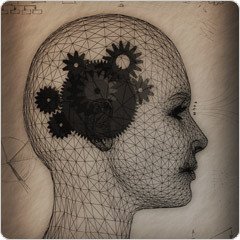 by D. Richard Martini, MD
by D. Richard Martini, MD
Director of Psychiatry and Behavioral Health
Behavior and emotion are probably the result of many factors, including biology, family history, and social environment. Yet patients who suffer from diseases that affect the central nervous system are at greater risk for psychiatric disorders. It is understandable that any problem that alters how the brain works also leads to changes in behavior and emotion.
In addition, in order for the recommended treatments for central nervous system diseases to work, there must be some impact on the brain. Children and adolescents with neurologic and neurosurgical problems should be monitored for the presence of psychiatric disorder. The following disorders are examples of these problems.
Epilepsy
Nearly seventy-five percent of cases of seizure disorder appear prior to age 20 and may be an isolated disorder or part of a more complex syndrome with neuropsychological consequences. The rates of psychiatric disorder in this population are three to nine times higher than healthy children and children with other chronic illnesses. Several factors are important in increasing relative risk including a younger age when seizures start, a higher frequency of seizures, and more generalized seizures.
Patients with a family history of psychiatric disorder and with a high level of social stress accompanying the diagnosis are also at increased risk. In fact, parenting style and the parent-child relationship have the greatest impact on the child’s emotional adjustment. When the seizure disorder is not well controlled, children have problems learning new material, and any delays in cognition or language increase the risk that children will experience more behavioral problems.
Children and adolescents with seizure disorders are also more likely to suffer from depression, anxiety disorder, and disruptive behavior disorders. The most significant behavioral problems, however, are inattention and impulsivity. Approximately 38% of all patients with seizure disorders experience symptoms of attention deficit hyperactivity disorder.
Brain Tumors
Twenty percent of all childhood cancers are brain tumors and these lesions are the most common solid malignant tumor in pediatric patients. This is a disorder where the treatment sometimes causes as many complications as the tumor itself. The location of the tumor and the age of the patient are important factors in determining the child’s outcome.
Younger patients tend to have more long term complications. The tumor can cause changes in growth, intellect, and social skills. These children are known to experience depression, mood changes, anxiety, and changes in personality as a result of the tumor. The treatment is also challenging for the young patient and the family. These patients frequently receive steroids to decrease the swelling associate with brain tumors. The patients neurologic symptoms frequently improve, but the drug may cause mood changes and unusual thoughts like paranoia and magical thinking.
Patients may also require radiation to the brain in order to effective reduce or eliminate the tumor. This treatment also has a high rate of complications including changes in behavior, emotional control, and cognitive skills. The treatment of brain tumors is also a challenge because the behavioral and emotional effects of these interventions may not be known for three to five years. The brain continues to grow and adapt to the changes brought on by the tumor and its treatment.
These are the key points to remember:
- There is a connection between diseases of the brain and the development of psychiatric disorders.
- It is important for family members and members of the medical team to be aware of behavioral and emotional changes that can follow the diagnosis and treatment of brain disorders, and to develop a supportive network of services to deal with these changes.
- The goal is for the child to return as much as possible to a normal and age appropriate level of functioning.
- This can best be done with the involvement of family, the medical team, and social supports in the community.
